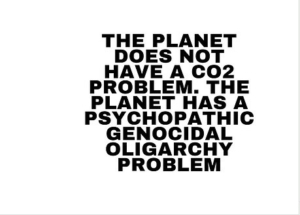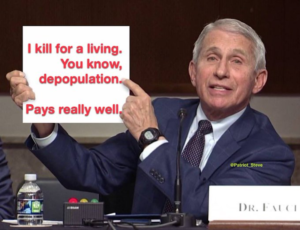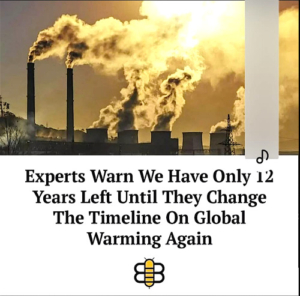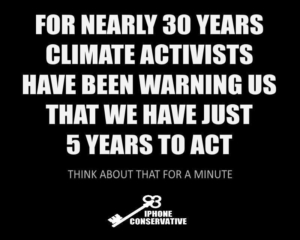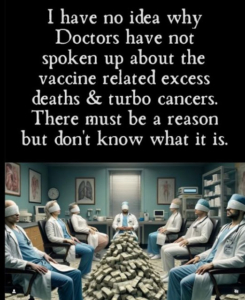The best lies are partial truths. The consensus of scientists about greenhouse gas warming is one of those partial truths behind an enormous lie. It is True that greenhouse gas can absorb radiant energy and most scientists agree that it will cause some warming. But that is where the consensus ends. There is no consensus about how much warming we will see from higher CO2 concentrations.
Ben Pile pointed out that the obvious problem this raises is that such a wide range of views on the next three quarters of a century discredits the notion that the IPCC represents a ‘scientific consensus’ on climate change. The ‘consensus’ – the putative expression of agreement by the worlds ‘top climate scientists’ – is the lynchpin of the narrative, epitomised by the Guardian, that the climate debate is between scientists and denialists. “Seventy seven per cent of climate scientists expect a rise of at least 2.5ºC,” explains the chart. Well, yeah, but 23% of climate scientists do not. And a good number of those connected to the IPCC believe that there will be just 1.5 degrees of warming – a third less warming than is anticipated by their colleagues at the other end of the spectrum. Clearly, there is, or needs to be, a debate.
There is a wide range of warming estimates because there is a range of ideas about how greenhouse gases affect the earth’s temperature. That is of course not what the media tells you. They tell you all scientists agree, which is almost never the case in any scientific discipline.
I have been interested in anthropogenic green house gas warming since the 90s. My interest was first piqued when I noticed what I was being told did not seem to match the data or things I was taught about heat transfer. Since then, I have done a lot of reading about it, and I know of at least 3 schools of thought.
- Traditional Dogma
Green house gases warm the atmosphere by 33 degrees. Most of the warming is done by water vapor with about 4 to 5 degrees due to CO2, based on how much energy is captured by CO2 vs how much is captured by water vapor. According to this theory the more greenhouse gases you add the less the impact increasing concentrations have. The effect is logarithmic.
The 4 to 5 degrees of warming from CO2 is almost all the warming that CO2 can do. There is very little energy left that it could absorb. This was determined way back in 1905 by a scientist named Schwarzschild. According to his calculations going from 400 ppm to 800 ppm will cause only another 0.7 degrees (Celsius) of warming.
Limitations of this theory
The 33-degree number cannot be correct. It is calculated by the amount of energy Greenhouse gases radiate back to earth which can be measured. The problem is that objects cannot be warmed by energy it has already released. If it could you would have a perpetual motion machine. As the earth warms it would radiate more energy out which would be captured by greenhouse gases and sent back which would warm the earth even more. It is a never-ending loop. If the total warming is not 33 degrees, then CO2 contribution is not 4 to 5 degrees. It could be more, or it could be less; much less.
- The feedback group
This school of thought agrees with the traditional dogma but does not agree that additional warming can be described by the Schwarzschild equation. They believe there are natural feedback loops that will affect future warming.
Most scientists fall inside this group, and it is divided in 2. One side thinks there will be negative feedback mechanisms that will dampen the warming caused by adding more CO2. The other side says the feed backs are positive (mostly from water vapor) and will magnify the warming. All the alarmists and most politicians fall into the group that believes in positive feedback.
Limitations of the Theory
This school of thought suffers from the same limitation as the traditional dogma. There is no way the 33-degree number is correct. But there are also other problems, especially with believing in positive feed backs. Feedback loops are very common in nature, but they tend to be negative. If they were not the earth would be chaotically unstable. Not surprisingly then you cannot see this positive feedback loop associated with previous warming. The positive feed back group wants us to believe that we will see run away warming in the future that we never saw in the past.
- The Atmospheric pressure group
There is a much smaller group that believes greenhouse gases have very little effect on temperature. To them the dominant mechanism is simply atmospheric pressure and distance from the sun. Temperature fluctuates only due to sun and cloud activity. Clouds are affected by the sun and by our position in the galaxy.
Limitations of the Theory
There is a very good correlation when you look at all the planets and moons in our solar system that have atmospheres. The problem is that not many of them have atmospheres. It does not give you many data points to work with. The correlation could fall apart if we ever get data points from other planetary systems.
There are always competing theories in science. The question is does the data refute any of them. With global warming the answer is yes. The data refutes the Traditional dogma and the positive feedback group. The earth is not as sensitive to increasing CO2 as even the Schwarzchild equation suggests.
Dr. Willie Soon just published a paper showing all the warming since 1850 can be explained by increased sun activity. The CO2 concentration during that time rose from 280 to 420 ppm. By the Schwarzschild equation this should have caused 0.6 degrees of warming, but we can’t see it in the data. The warming due to CO2 has been negligible.
The dirty little secret about climate change is that temperatures have never correlated well with CO2 concentrations. Most of the time CO2 follows rather than causes temperature increases. The data says that the feedback loops are either highly negative or that the 33-degree estimate, that we know is wrong, is way too high. The amount of warming due to all greenhouse gases is much lower than we think. This supports the thinking of the Atmospheric pressure group.
So, do we know how much warming additional CO2 will cause? No, we don’t. But we have 2 theories that predict negligible warming, and the data supports those 2 competing ideas. The data refutes the idea of positive feedback loops and that is the one all climate policies are based on. Do you see now what a farce the last 3 decades have been?
